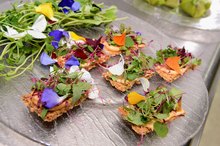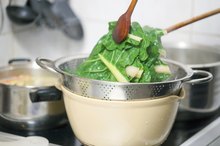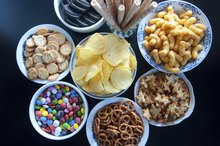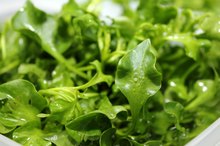What Does Cooking Do to Vitamin C?
Eating more foods with vitamin C increases the antioxidant protection you receive from your daily diet. Vitamin C, also known as ascorbic acid, bolsters your immune system while also supporting collagen production for healthy skin and joints. The nutrient additionally helps your body absorb iron. But when it comes to vitamin C, which foods you select are only half of the equation. The cooking methods you use in preparing the foods has a significant impact on how much ascorbic acid you actually take in.
Cooking and Vitamin C
Water and heat can dilute the concentration of vitamin C in foods, notes the Office of Dietary Supplements at the National Institutes of Health. In terms of cooking, this means that boiling represents the biggest threat of vitamin loss, because it uses both water and heat. Baking, broiling and pan-frying foods also lower vitamin C content. Cooking with canned food or older produce may additionally lessen the ascorbic acid content, because vitamin C decreases during storage.
Examples
Pros & Cons of Raw Food Diets
Learn More
A ½ cup serving of fresh broccoli provides about 80 percent of the daily value, or DV, for vitamin C, according to the Centers for Disease Control and Prevention. The same amount of cooked broccoli contributes 60 percent. Fresh cauliflower offers 45 percent of the DV for ascorbic acid, compared to the 40 percent in cooked cauliflower. Similarly, a ½ cup serving of fresh green peppers contributes more vitamin C than the same amount of cooked peppers, at 100 percent DV compared to 84 percent. On the other hand, cooking removes water from produce, meaning that foods like spinach cook down considerably. In these cases, the more concentrated form of the vegetable compensate for nutrient loss. The same by-volume amount of fresh and cooked spinach delivers the same amount of vitamin C.
Best Foods
Of the two dozen food servings the USDA lists as top sources for vitamin C, 15 of them are uncooked. In the case of foods that are high in the nutrient whether fresh or cooked, the raw versions were nonetheless higher in vitamin C than the cooked versions. Top fresh foods for vitamin C include citrus, grapefruit and tomato juice, as well as guavas, mangoes, kiwi, papaya, citrus fruits, strawberries, cantaloupe, broccoli and tomatoes. Cooked dietary sources high in vitamin C include sweet potatoes, Brussels sprouts, broccoli, spinach, cooked sweet peppers, kale and kohlrabi. All of these fresh and cooked food selections supply at least 20 percent of the daily value for vitamin C.
Preparation Strategies
Boiled Vegetables vs. Steamed
Learn More
One obvious strategy for reducing vitamin loss during cooking is to serve more uncooked food. Strawberries, oranges, kiwis, grapefruit, cantaloupe, cauliflower, tomatoes, green peppers, red peppers and broccoli are all examples of foods rich in vitamin C that either taste best uncooked or which can be served fresh as well as cooked. According to the ODS, microwaving and steaming prevents more vitamin loss than other cooking methods. Juicing uncooked fruits and vegetables, or buying fruit and vegetable juices, also delivers vitamin C. If you use canned foods, choose those that have a vitamin count even after cooking and storage, such as sweet potatoes.
Related Articles
References
Writer Bio
Ellen Douglas has written on food, gardening, education and the arts since 1992. Douglas has worked as a staff reporter for the Lakeville Journal newspaper group. Previously, she served as a communication specialist in the nonprofit field. She received her Bachelor of Arts from the University of Connecticut.









